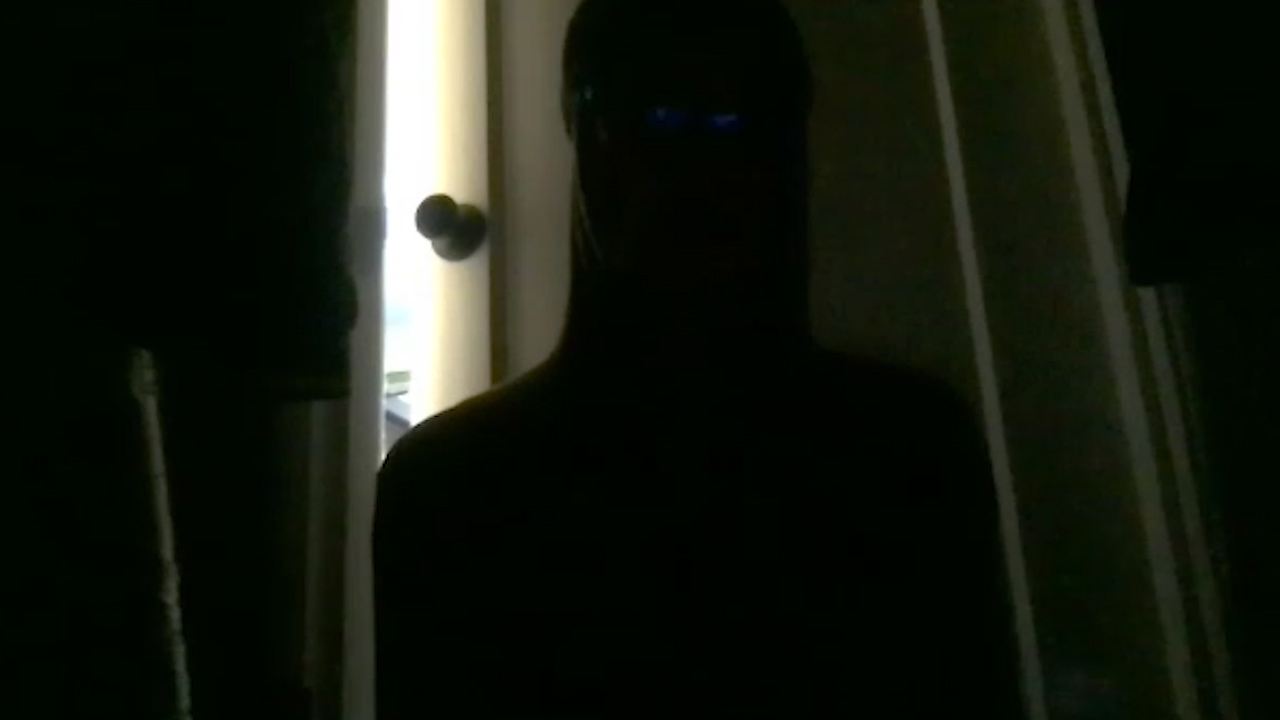
- 2021-02-09
- 0.0 Reitingas
- 423 Peržiūros
- Aptarti
On January 6, 2021, I was contacted by a nurse who works in a hospital on the outskirts of Toronto, Ontario. Toronto is Canada’s most populous city, and the fourth largest city in North America.
(Article by Nurse Andrea and John C. A. Manley republished from GlobalResearch.ca)
The Ontario government’s website claims that “escalating [COVID-19] case counts have led to increasing hospitalization rates and capacity challenges in many large urban hospitals” which “are reaching critical limits.” As a result, the province has continued to enforce lockdowns, mandatory masking and social distancing.
Yet this whistleblowing nurse, as you can read below, works in a “large urban hospital” and reports a very different story. She has provided sufficient evidence, and links to public records, to satisfy me that she is indeed a nurse working for over a decade in multiple Canadian hospitals. To protect her identity, position and family, details about her and her place of work have been changed or omitted, without altering her message.
Nurses Scared to Speak Out
John Manley: Why do you prefer to use a pseudonym?
Nurse Andrea: I’d really like to avoid losing my job or my licence. It’s important to speak out, but at the same time, there’s no sense in becoming a martyr, because all evidence seems to suggest I’ll be crushed.
JM: Are you sure you are a nurse working in Canada, not communist China?
NA: Yes, we are now officially living in a kind of Soviet Covidestan, where lockdowns, masks, and vaccines are the brutally state-enforced ideology. It does give me a sense of terror and anxiety. Then again, I make my points loud and clear to my colleagues, but I don’t proselytize. I maintain strict professional boundaries with patients and play by the rules. I need to lurk until the time is right to strike.
Empty Emergency Room
JM: Can you describe what the emergency room situation is like in your hospital? I would imagine, since the province is in lockdown and under a declared state of emergency that the situation there must be exhausting.
NA: I’ve been doing overtime in ICU because ER is literally empty at times. Eventually a bunch of ambulances may show up all at once (no COVID) and make it feel busy, but this is the nature of ER. Otherwise, hours and hours may go with only 20-40% occupancy. The overall hospital tracker shows total hospital occupancy approximately 70%.
JM: Does not the staff question this low volume during not only a “pandemic” but also a time of year when hospitals in Ontario are normally so overwhelmed they are resorting to “hallway healthcare”?
NA: The other day a member of the leadership team was saying how our ER volume is about half what it was a year ago (before the “deadly pandemic”). Someone said, “But there’s so many cases… why are volumes lower?” I said, “Maybe the virus is not as deadly as the hype suggests?” Those kinds of comments are usually met with silence.
Mostly Non-COVID Patients
JM: Can you give me an example of the type of non-COVID patients you are caring for?
NA: A man came in with his dad from the nursing home. He was furious because his dad was held in isolation, not fed, and was sinking into decline at the nursing home because no family could come see him. I see this with frequency.
JM: Can you give me another example of the type of cases you are seeing?
NA: Busy day in the fracture room, yesterday. Lots of mangled limbs from slipping on the ice. None of it COVID, though everyone gets COVID swabbed before orthopaedic surgery, even asymptomatic patients with straightforward limb injuries.
This just proves we all need to stay home. You can slip on your front porch and overwhelm the “Icey U.”
ICU Caring for Only Nine Patients
JM: If you are taking shifts in ICU, I would then assume that is where the real COVID crisis is happening?
NA: Yes it’s true that we are at 90% occupancy (with far more ventilators than usual). But let’s put this in perspective: If an ICU has ten beds, then discharging 2 patients brings us down to 70% capacity. Not everyone in ICU absolutely needs to be there. There has always been incentive to keep ICU at near full capacity.
JM: I’m sure ICU care is intense, but nine patients does not sound overwhelming to me.
NA: First off, I do not diminish the hard work and the heroism of my colleagues. But let’s be real, staff still have time to stand around and chat, take their coffee breaks, and check their phones. Sometimes staff needs moral support rather than alleviate any acute life-threatening staff shortage or assist resuscitative acts.
JM: So it’s not a “war zone” like the media says?
NA: The ICU looks exactly like an ICU should look: busy with really sick people.
JM: So the media is exaggerating?
Critical Care Rationing Latest Media Scare Story
NA: The other day, I was reading the National Post in the hospital lobby and the latest media scare story is about critical care rationing. Once again, they are talking about “war zones” and we are being scared to think “doctors may have to choose who lives and who dies.”
So when I got back to the ICU I had a chance to talk about rationing with an illustrious ICU doctor. We were conducting daily rounds on a chronically ventilated patient well past the average life-expectancy with many debilitating conditions demonstrating no hope for any quality of life. However, they are kept alive (physiologically with machines) because the family insists on keeping them going “at all costs.”
JM: So a person well past eighty, with almost zero hope of recovery, is receiving critical care in a time of supposed medical rationing? It doesn’t sound like doctors are having to make hard choices about who should live and who should die.
NA: The general sentiment here is that, contrary to doctors and nurses being forced into a moral quagmire of health care rationing, many would welcome a return of professional autonomy. We would prefer to act on an objective clinical judgement, not the emotional whims of families who cannot accept the reality of death.
The truth is that our government healthcare system has set up an impossible situation. On the one hand, medically illiterate families are given a level of decision making power to keep people alive on ventilators ad infinitum despite all indicators pointing to total, utter, and abject futility. On the other hand, the amount of resources required for this is impossible to sustain. It has always been impossible, bankrupting our healthcare system for decades.
Futile Use of Intensive Care Resources
JM: You’re saying, then, that even many of the doctors do not agree that there is precedent for the use of these intensive care procedures?
NA: Intensive care has saved many lives and is a very important element of hospital care, even during this COVID “crisis.” But at the same time, it’s not magic. Doctors need to feel comfortable saying: “Sorry, we’ve done all we can for your loved one, but there is no hope for return to quality of life, it’s time to say goodbye…”
JM: It sounds like a denial of the reality of death?
NA: That is true and it’s what I’ve been saying since March: ICU and ventilator worship will result in an ocean of futility when applied to every elderly person who is already nearing the end of their life-span with multiple chronic organ dysfunctions. In fact, nurse burnout in the ICU can be attributed to the suffering we cause after sticking tubes into every orifice and forcefully restraining elderly people as they rot away in bed when they are simply trying to die.
JM: In New York, Italy and China there has been much evidence and testimonials from nurses showing that patients were not dying form COVID but from being placed on ventilator prematurely. Have you seen much unwarranted intubation in your hospital?
NA: Thankfully, I haven’t seen this directly, first-hand. However, I called BS on the ventilator-worship back in March and April last year and was vindicated. I’ve worked with intubated patients for a long time. One of the biggest drivers of ventilation was the same as for lockdown: fear. Especially during the early phase of the COVID “crisis,” there was extreme media-induced paranoia among nurses and doctors about a uniquely deadly and unusually transmissible coronavirus. The belief was that intubation would prevent aerosolized spread of the virus to staff. I heard these conversations first hand.
Death by Ventilators and Lockdowns, Not COVID
JM: Was death from ventilation very common during the first wave, or something that only happened occasionally?
NA: We had an epidemic of physician-induced death from ventilators in the first wave, no doubt. That is beyond dispute. Death from ventilators and lockdown, not COVID. This has been well documented in places like New York.
Widespread Government-Caused Horror
JM: How do you feel being made to work in such an oppressive environment?
NA: I’m glad I still get to work, even under this oppression. I feel so terribly for those forced out of work. I see them sometimes come to the hospital, suicidal. But even many of them are not directing their rage at the people in power who did this to them. When I’m not working, I start stewing in my own rage about what is going on with lockdown. Working in a hospital I can play pandemic theatre. I’m busy taking care of sick people — often very few of them actual COVID cases — that it takes my mind away from the widespread government-caused horror from the pandemic response.
JM: Thank you for speaking out.
NA: Sadly, the enemies of rationality and freedom are all around us, including our neighbours, family, and friends. I firmly believe future historians will look back on this time with the same sense of horror we feel today about medical and social engineering atrocities of the past — such as eugenics, forced lobotomies and medical experimentation on “undesirables.”
I thank you very much for this opportunity to mark my word today
Read more at: GlobalResearch.ca
Pasaulio naujienas kitaip... skaitykite Paranormal Telegram, FB ir X(twitter) kanale...kadangi jau perskaitėte šį straipsnį iki pabaigos, prašome Jus prisidėti prie šio darbo. Skaitykite „Paranormal.lt“ ir toliau, skirdami kad ir nedidelę paramos sumą. Paremti galite Paypal arba SMS. Kaip tai padaryti? Iš anksto dėkojame už paramą! Nepamirškite pasidalinti patikusiais tekstais su savo draugais ir pažįstamais.
Turite savo nuomone, tapk autoriumi, prisijunk ir rašykite bloge. Dalinkitės receptais, sveikatos patarimais, nutikimais, susidūrėte su nekasdieniškais reiškiniais. Galite išversti iš užsienio kalbos, talpinkite su nuoroda. Laukiame Jūsų straipsnių, naujienų, apžvalgų ar istorijų!
Susijusios naujienos
Būkite pirmi, kurie pasidalins savo nuomonėmis su kitais.
Skaityti daugiau
Skaityti daugiau
Skaityti daugiau
Skaityti daugiau
Skaityti daugiau
Skaityti daugiau
Skaityti daugiau

